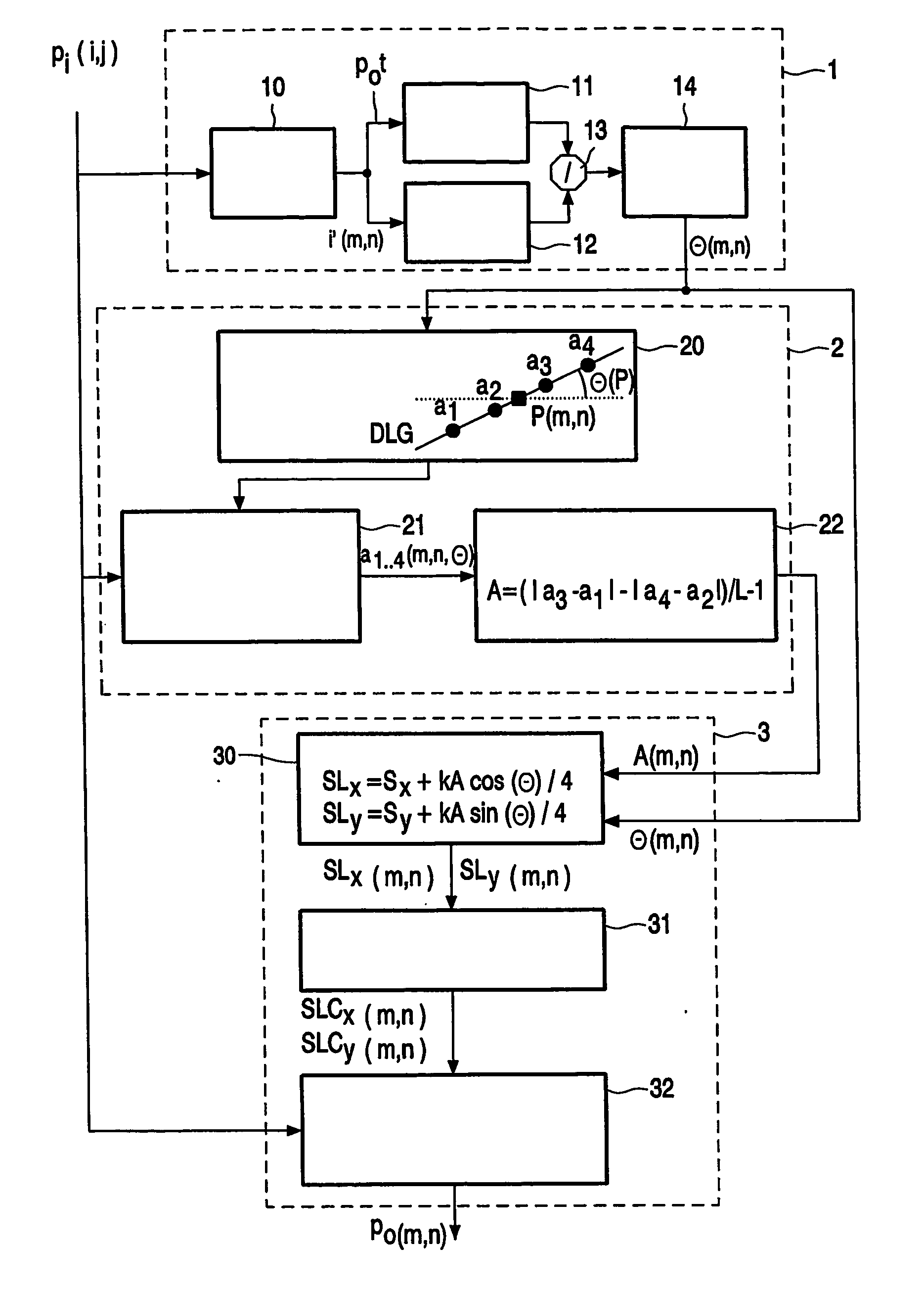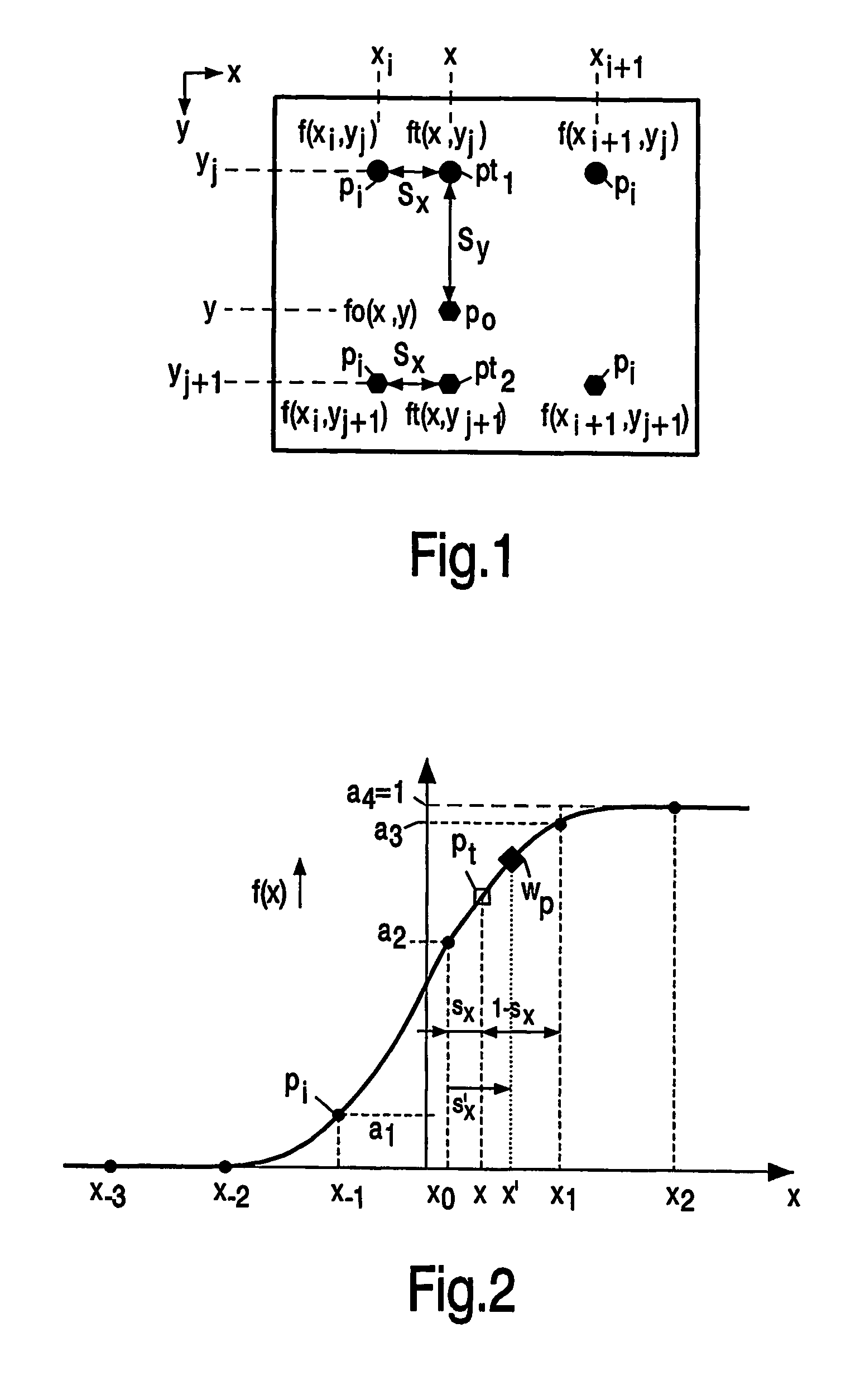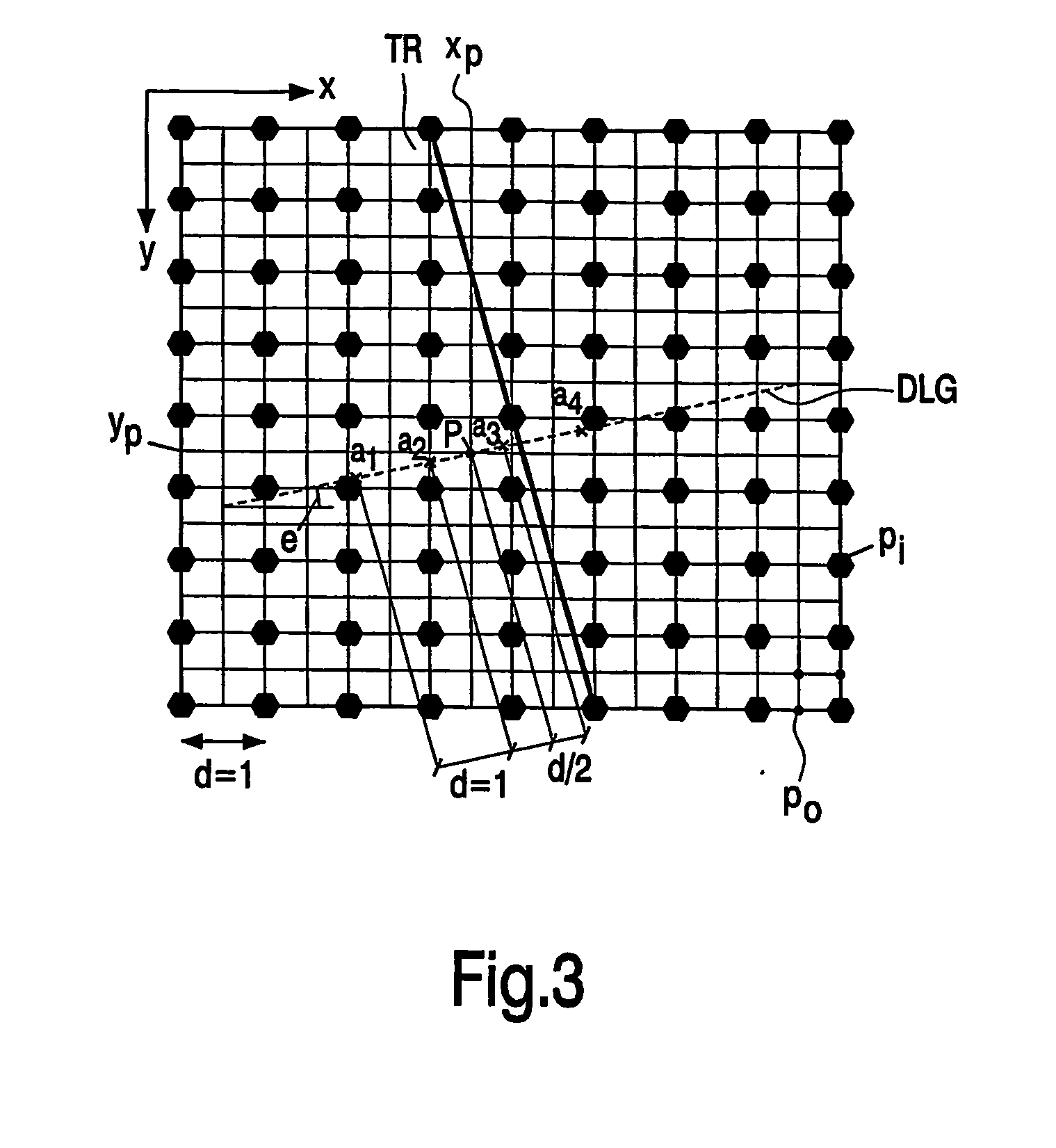Interpolation of images
a technology of interpolation and images, applied in the field of interpolation of images, can solve the problem of requiring a relativly complex algorithm, and achieve the effect of high-performance algorithm
- Summary
- Abstract
- Description
- Claims
- Application Information
AI Technical Summary
Benefits of technology
Problems solved by technology
Method used
Image
Examples
first embodiment
[0044] Two possible embodiments are elucidated for determining the local gradient θ. In the first embodiment, the input image II is first interpolated with a known algorithm, for example with a bilinear filter, to obtain roughly interpolated output samples. The local gradient θ is determined in the output domain from these output samples. For example, by using a Sobel filter. Possible masks of Sobel filters to obtain a value of the directional derivative along x and y directions are: Sobelx=(1 / 40-1 / 41 / 20-1 / 21 / 40-1 / 4)Sobely=(-1 / 4-1 / 2-1 / 40001 / 41 / 21 / 4)
[0045] The direction of the gradient θ at the position xi,yj is then estimated as follows:
θ(x1,yj)=arctan((f1*Sobely)|(x1,yj) / (f1*Sobelx)|(x1,yj)) (7)
wherein f1 is the result of the rough interpolation of the input image II, and θ is an angle which varies between −π / 2 and π / 2.
[0046] The gradient evaluation has been performed by using Sobel's method in the output domain. A pre-processing, for example a simple bilinear interpolator, i...
second embodiment
[0061]FIG. 5 shows a flowchart of part of another embodiment of the one step Warped Distance concept in accordance with the invention. FIG. 5 shows the steps required in the step 1 which determines the direction of the local gradient θ(m,n) in accordance with the second embodiment discussed before. Now, step 1 comprises the steps 15 and 16 instead of the steps 10 to 14 shown in FIG. 4. In step 15, the direction of the local gradients θ(i,j) is determined in the input image II for the input samples Pi. The step 16 maps these local gradients θ(i,j) from the input domain to the output domain to obtain local gradients θ(m,n) for the output pixels Po. The other steps of the WaDi processing of this embodiment in accordance with the invention are equal to the steps shown in FIG. 4.
[0062]FIG. 6 shows a block diagram of a display apparatus comprising the Warped Distance interpolator in accordance with the invention. An input video processor IVP processes input video IV to obtain the input im...
PUM
 Login to View More
Login to View More Abstract
Description
Claims
Application Information
 Login to View More
Login to View More - R&D
- Intellectual Property
- Life Sciences
- Materials
- Tech Scout
- Unparalleled Data Quality
- Higher Quality Content
- 60% Fewer Hallucinations
Browse by: Latest US Patents, China's latest patents, Technical Efficacy Thesaurus, Application Domain, Technology Topic, Popular Technical Reports.
© 2025 PatSnap. All rights reserved.Legal|Privacy policy|Modern Slavery Act Transparency Statement|Sitemap|About US| Contact US: help@patsnap.com



